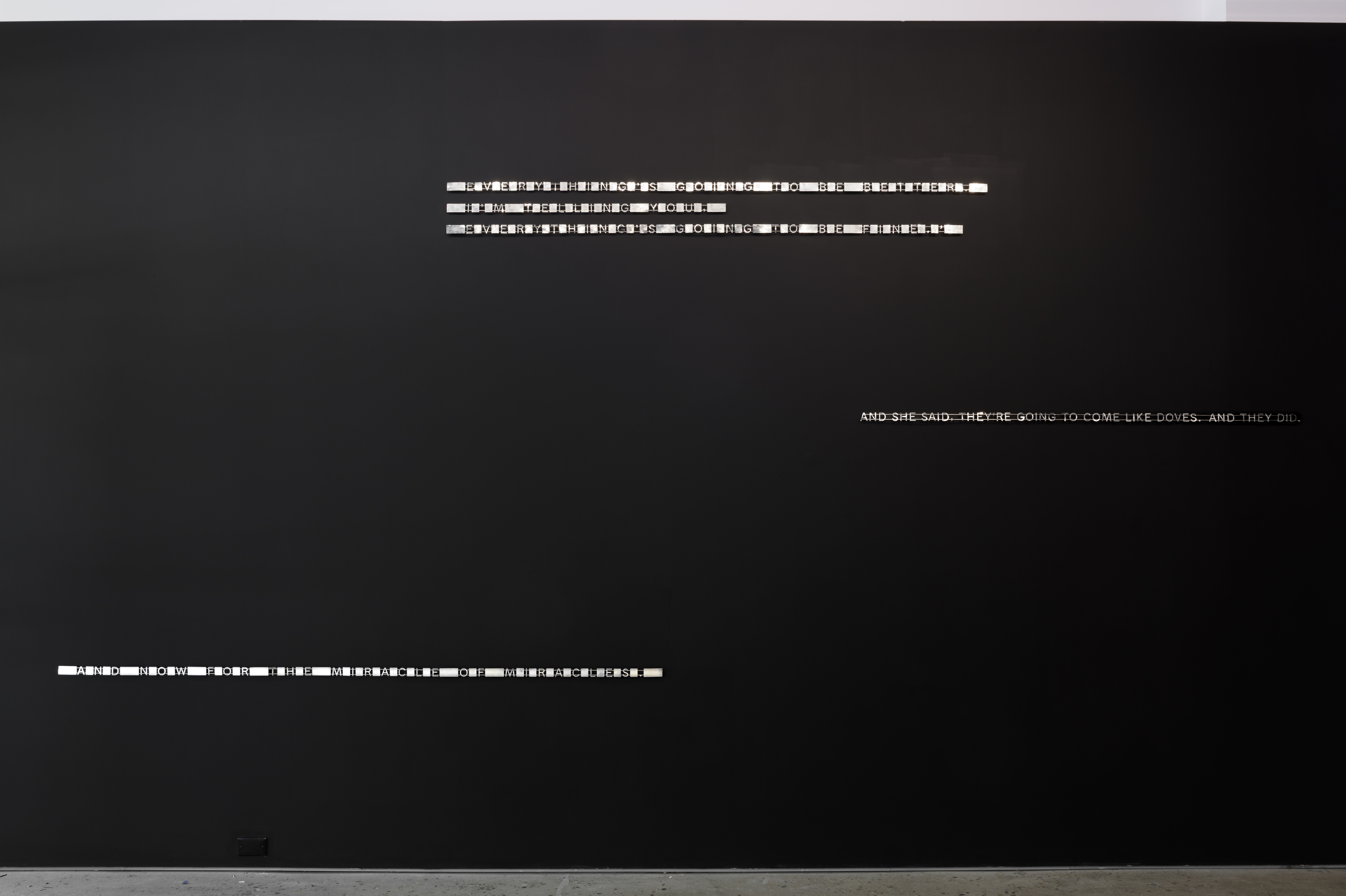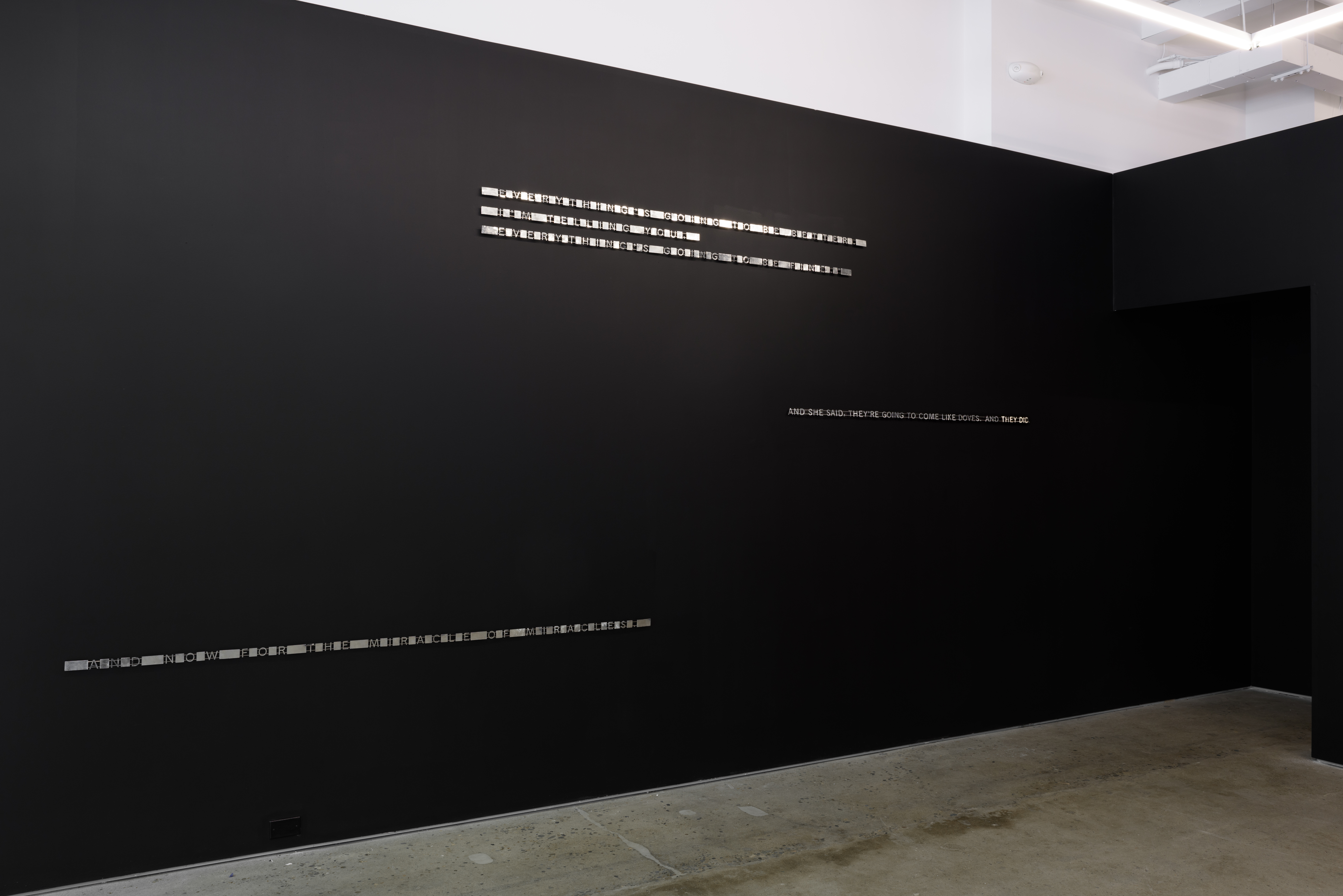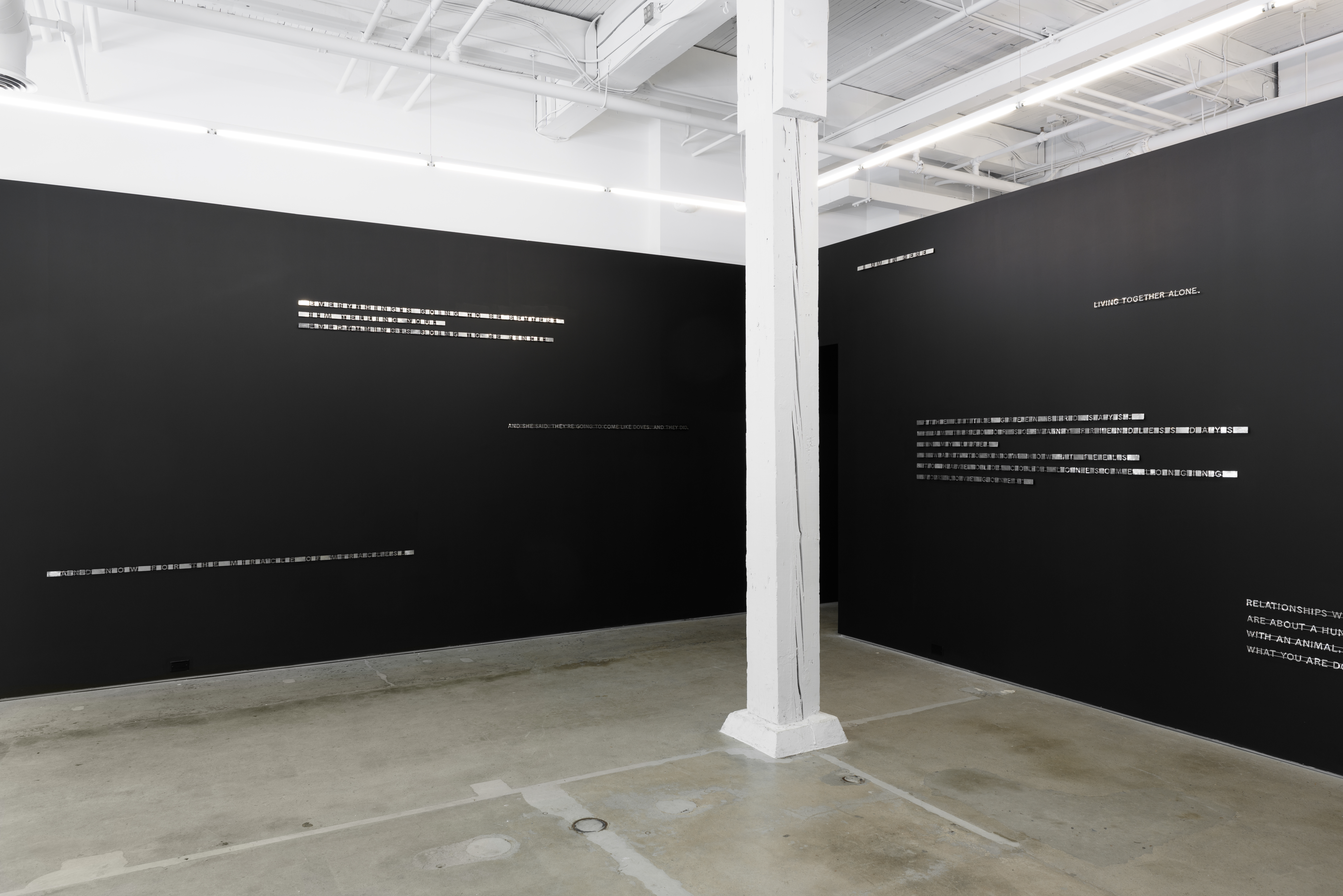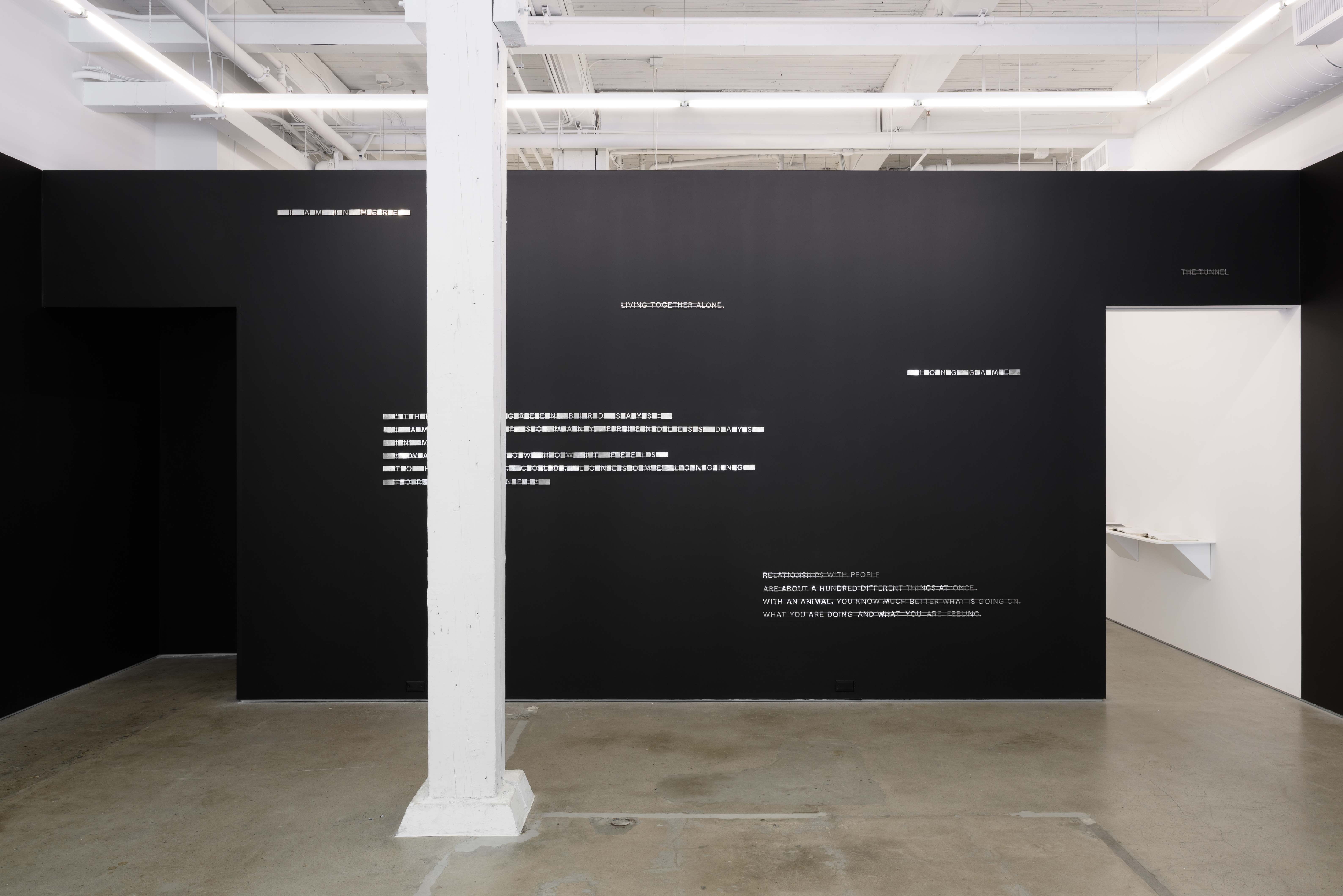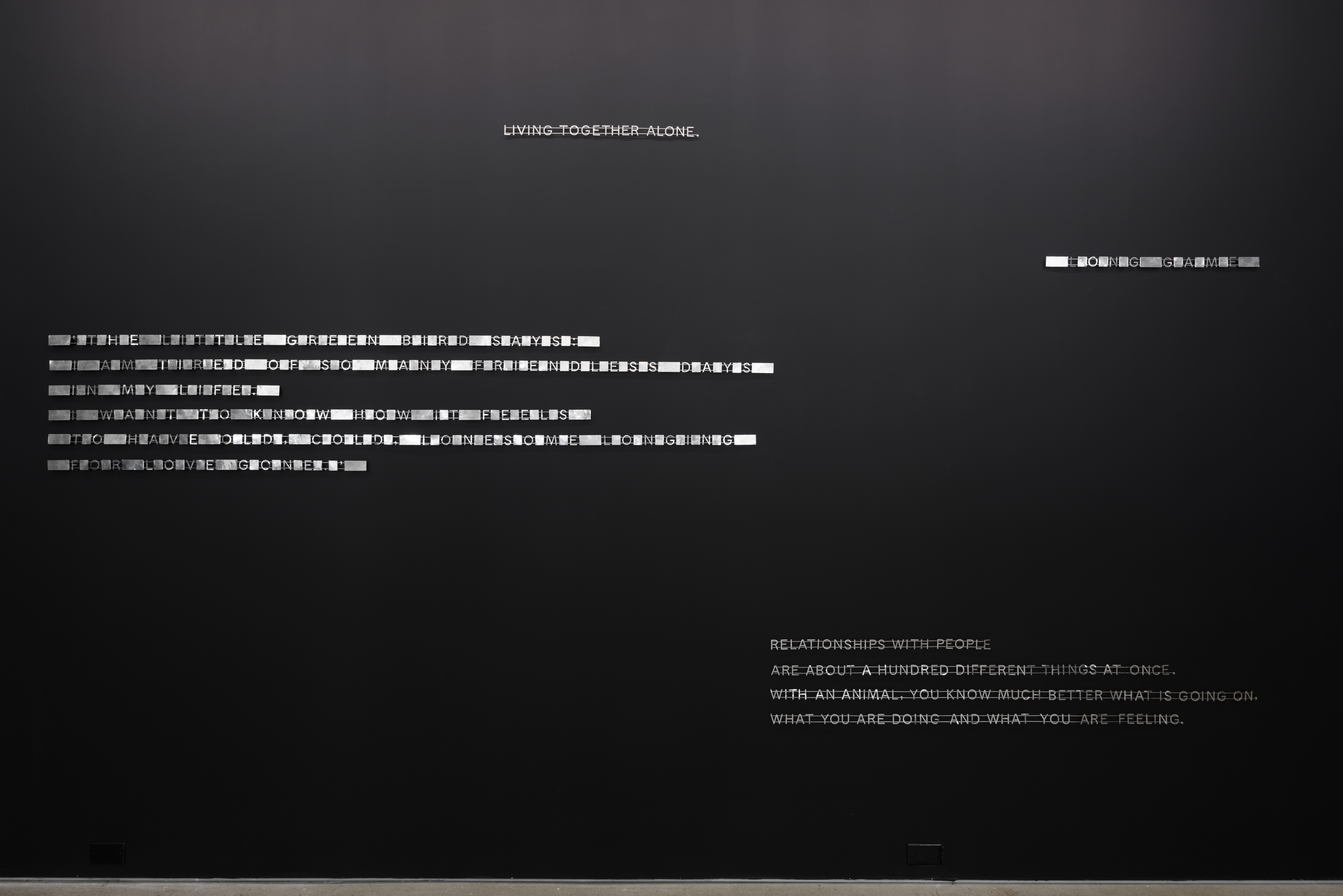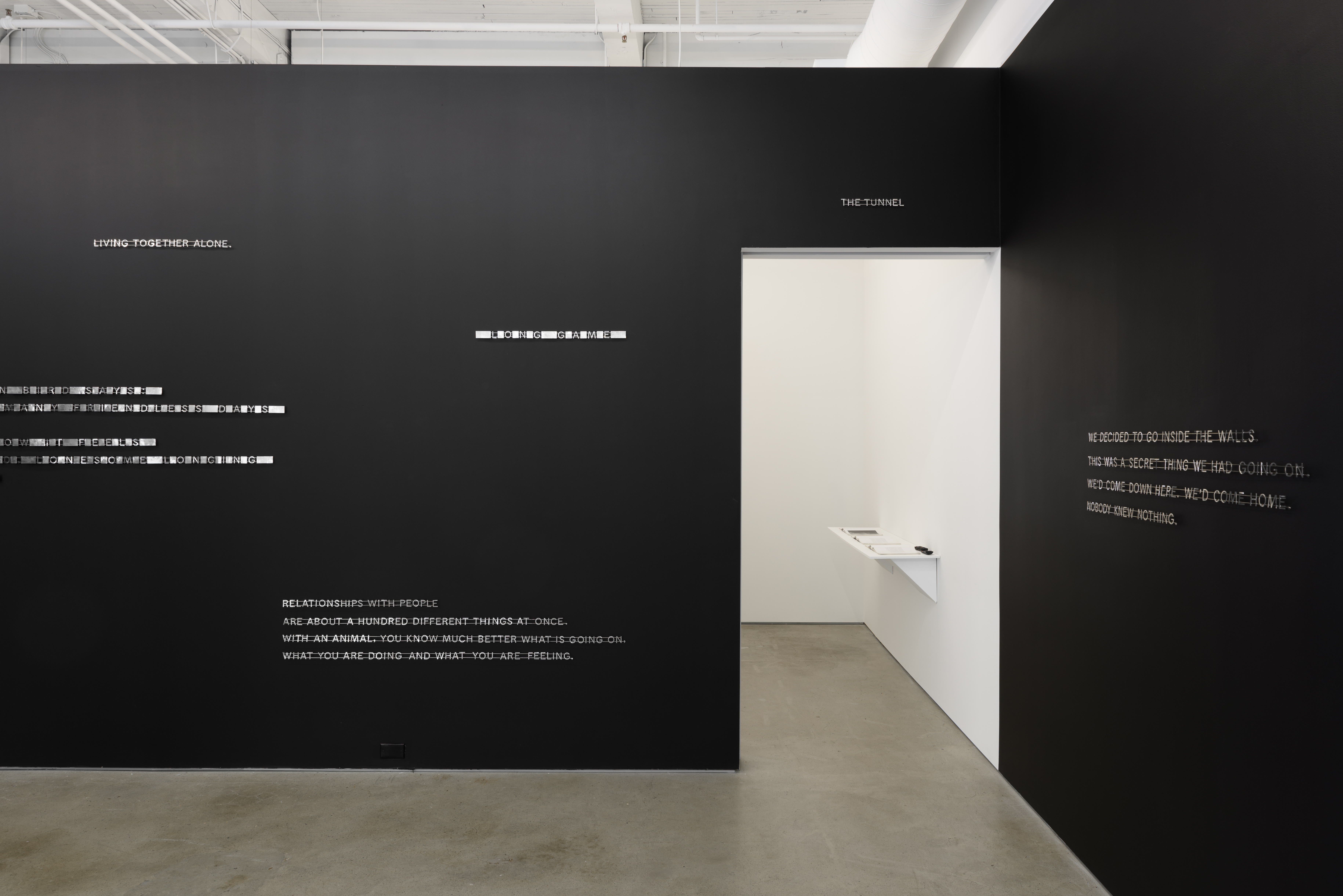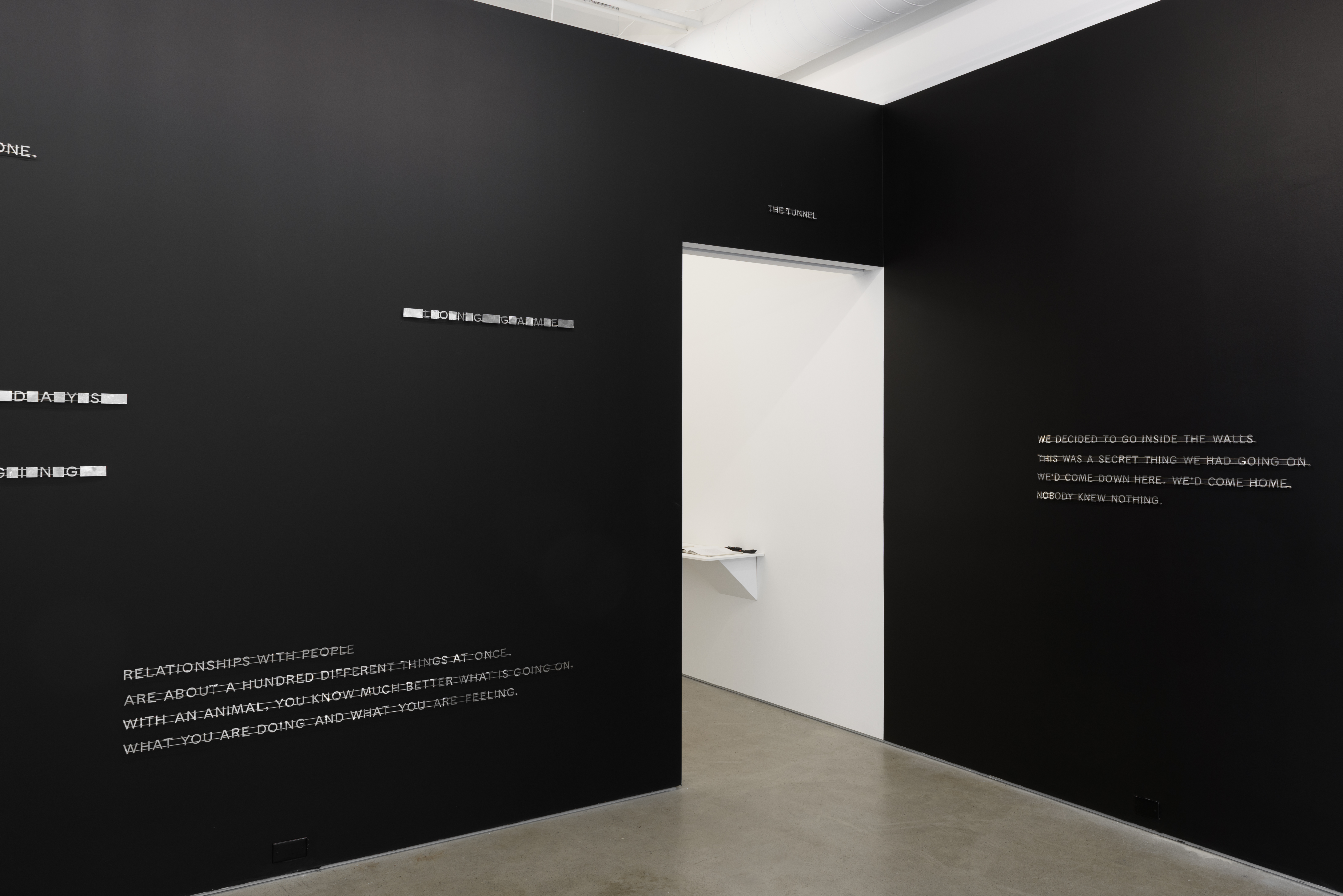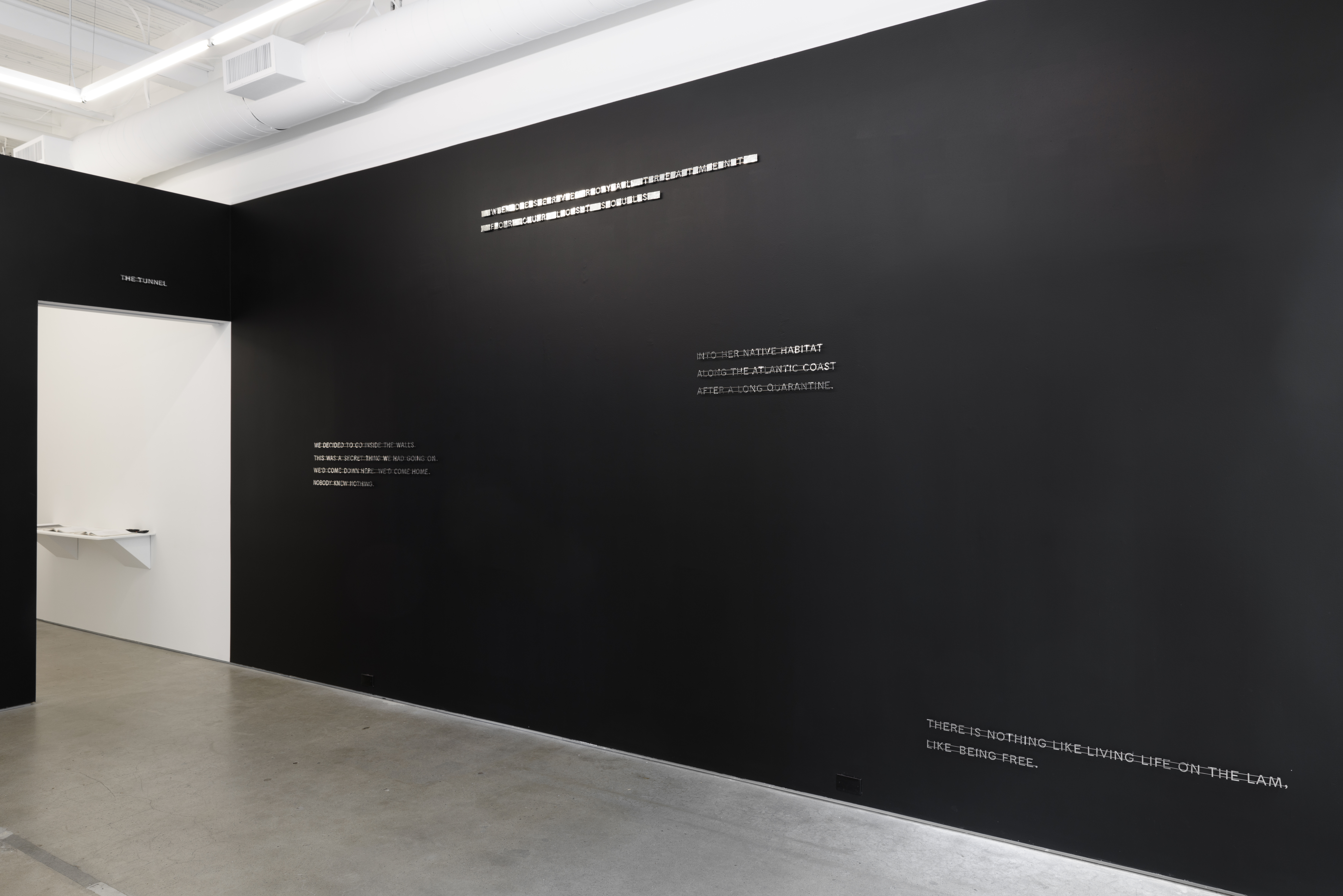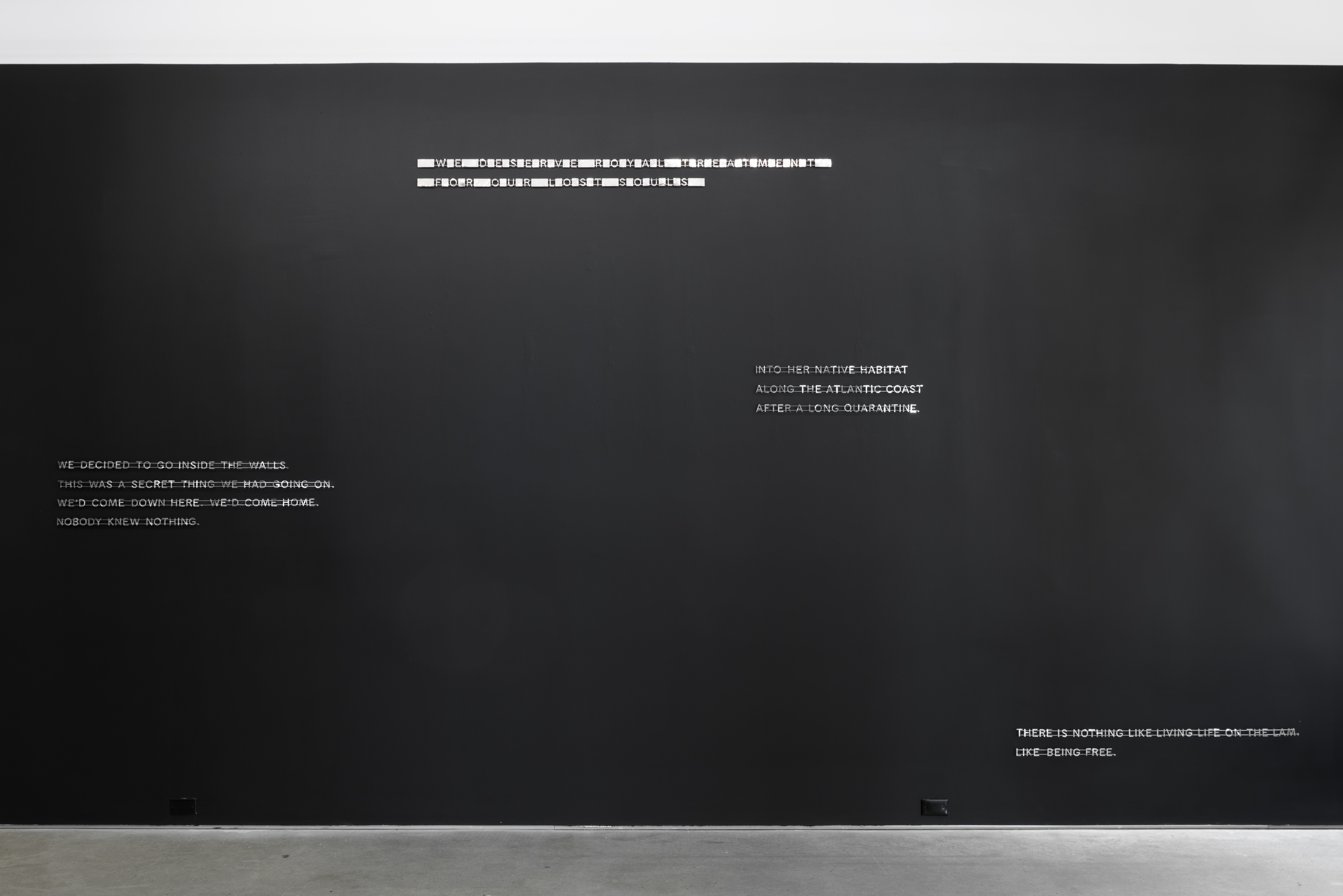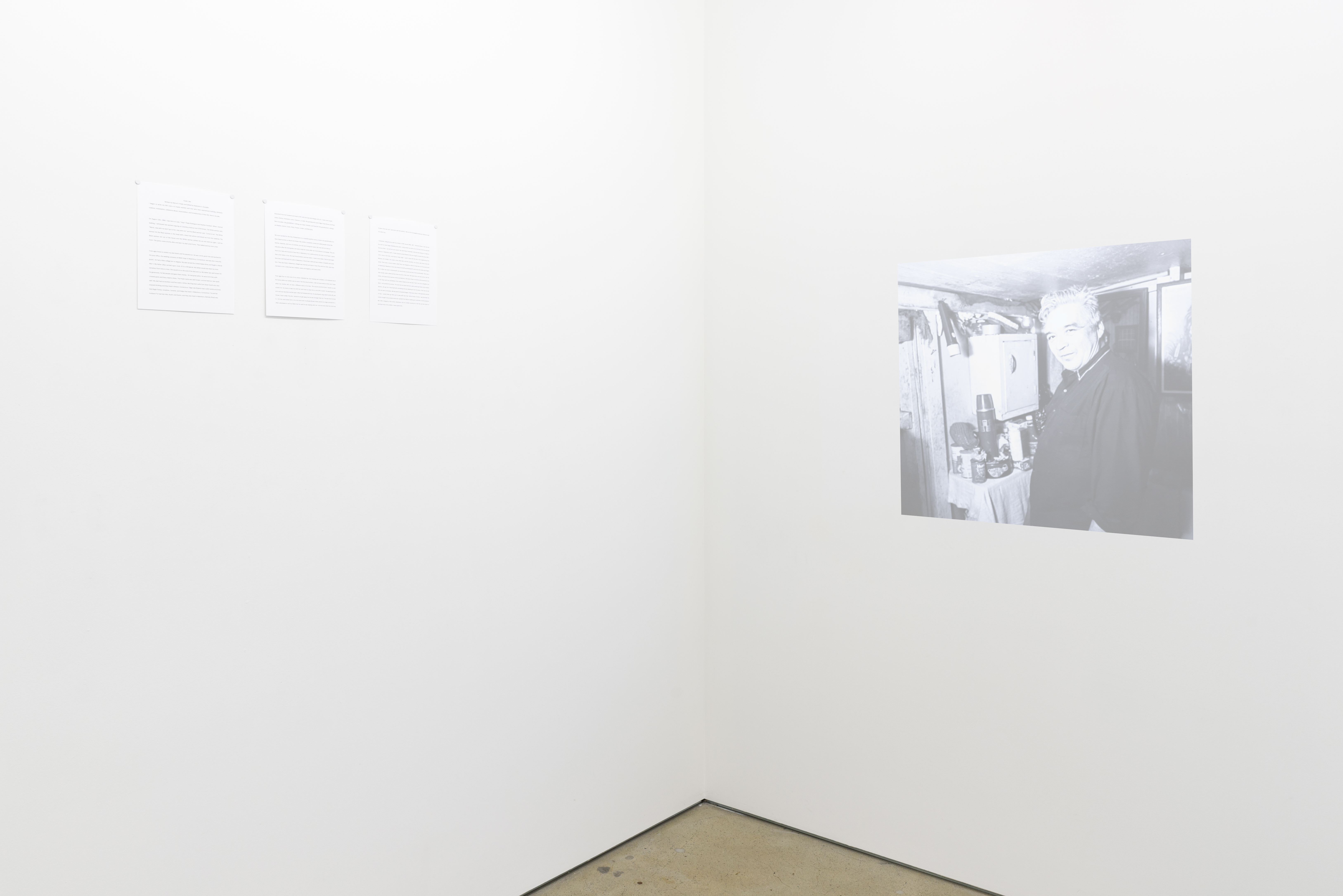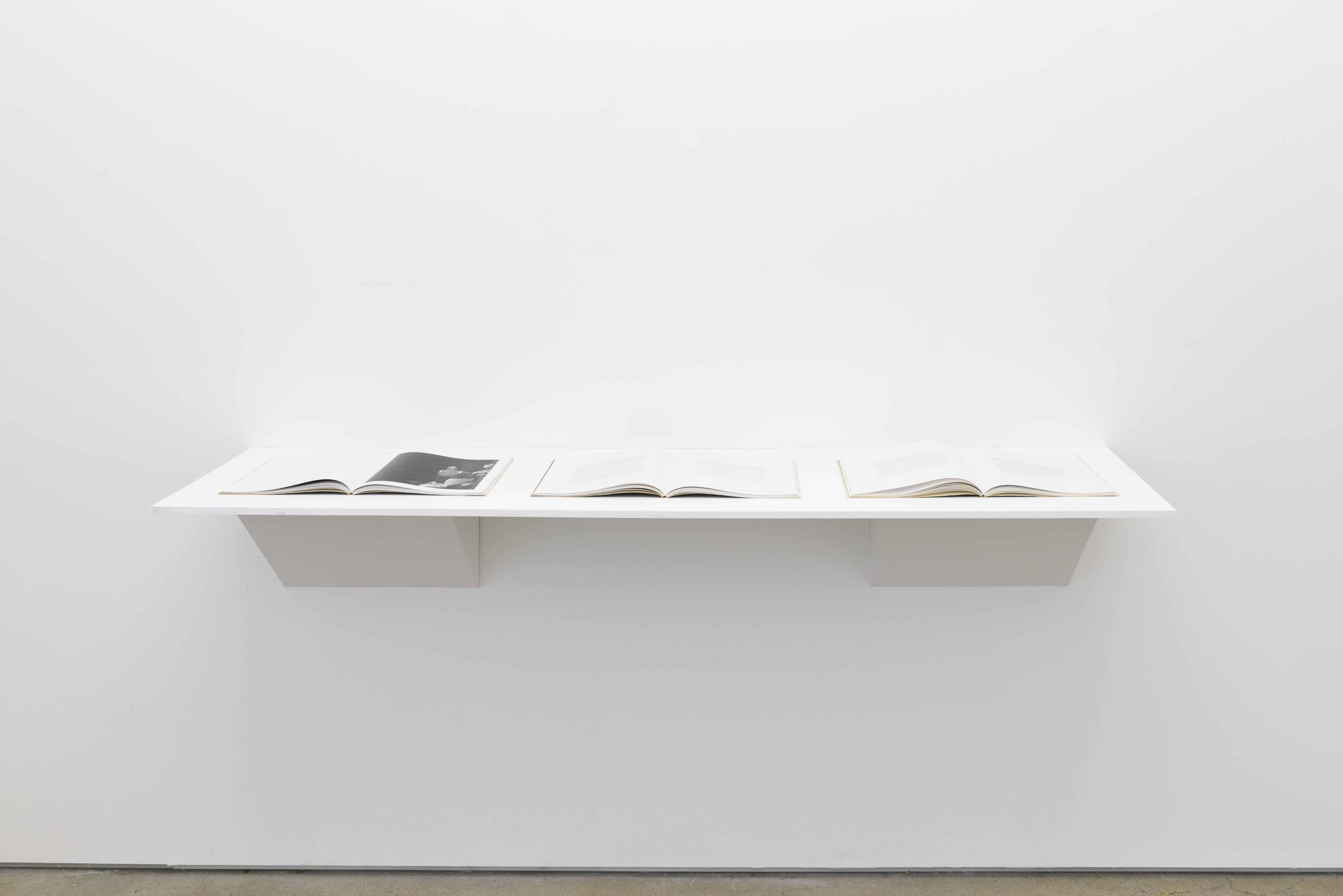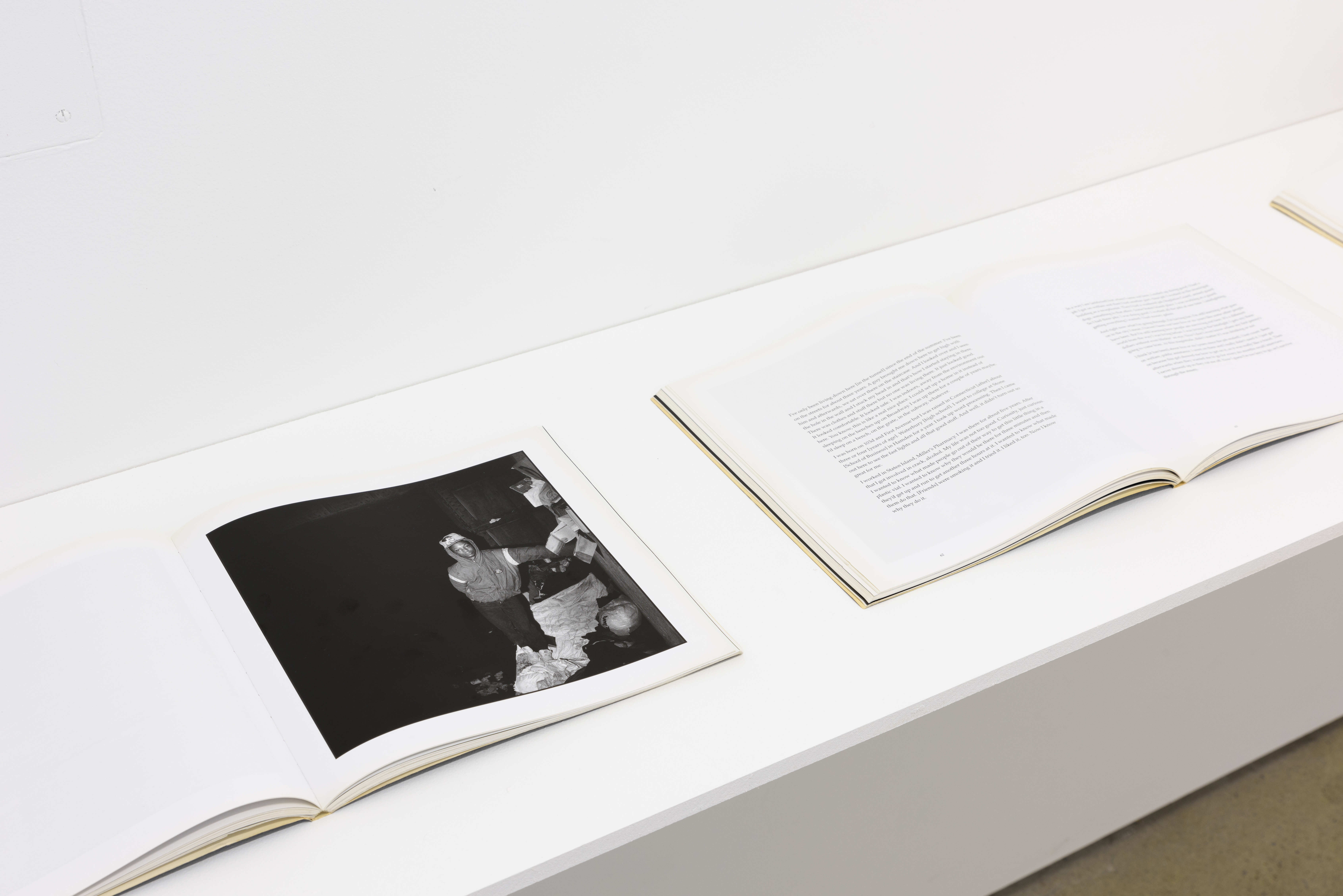Jonathan Berger, Margaret Morton, Maria A. Prado
June 5 –July 24, 2021
Adams and Ollman is pleased to announce Jonathan Berger's second solo exhibition with the gallery. The exhibition includes a new series of text sculptures, each of which is a discrete line fragment, excerpted from his recent large-scale project An Introduction to Nameless Love. These pieces are presented alongside work he has included by two of his collaborators from that project— the photographer Margaret Morton (1948-2020) and homeless women's advocate and activist Maria A. Prado.
Jonathan Berger's large-scale project, An Introduction to Nameless Love, was co-organized by and presented at the Carpenter Center for the Visual Arts, Harvard (2019), and Participant Inc., New York (2020), and produced in collaboration with Mady Schutzman, Emily Anderson, Tina Beebe, Julian Bittiner, Matthew Brannon, Barbara Fahs Charles, Brother Arnold Hadd, Erica Heilman, Esther Kaplan, Margaret Morton, Richard Ogust, Maria A. Prado, Robert Staples, Michael Stipe, Mark Utter, Michael Wiener, and Sara Workneh. The project chronicles a series of remarkable relationships, each built on an extraordinary connection that lies outside the bounds of conventional romance. Each of these relationships reaches the profound intensity and transformative experience often associated with so-called "true love" but does so through bonds based in work, friendship, religion, service, mentorship, community, and family, as well as relationships between people and places, objects, and animals. The project seeks to both interrogate and vastly expand societal considerations of what love can be, where it can be found, who and what can possess it, and its potential to shape experience.
From 2014-2019, Berger conducted a series of dialogues with diverse subjects about these types of relationships. Drawing on conversations and correspondences, the ongoing outcome of this process was a series of autonomous texts, each of which was generated collaboratively between Berger, the subject(s), and a guest editor of specific significance to each story. The exhibition presented these narratives as a series of large-scale, text-based sculptures comprised of thousands of meticulously cut and formed tin letters.
For this exhibition, Berger isolates and removes lines from these larger texts which constitute An Introduction to Nameless Love, creating an installation of discrete floating silver tin quotations, words, terms, phrases, statements, and crystalline relational moments. Unlike the original exhibition, which functioned much like a book with chapters, Berger's presentation of small-scale pieces at Adams and Ollman renders an environment where seemingly disparate parts of each of these distinct stories form unlikely relationships to one another, further illuminating the project's overarching investigation of "nameless love" in new ways. In this regard, th environment Berger creates from these excerpts in Adams and Ollman's main gallery function more philosophically, allowing for both direct moments of connection and transitional spaces of contemplation, speculation, and invention.
One of the stories chronicled in An Introduction to Nameless Love is that of Maria A. Prado, who lived underground from 1988-1995 and again from 2006-2007 as part of a homeless community known as The Tunnel, which occupied a two and a half mile long abandoned Amtrak freight train tunnel that ran under Manhattan's Riverside Park. The space was originally created by Robert Moses in 1934 in order to hide the Hudson River Railroad from the expensive apartments on Riverside Drive and became no longer operational in the early 1970s. The space began being occupied by the homeless in 1973 and continued to function as a self-sustaining self-governed community, of different inhabitant groups, each of which constituted a neighborhood of sorts, until all of the residents were evicted in 1996. Subsequently, several years later, the space began being inhabited again.
In 1991, Prado met the photographer and oral historian Margaret Morton, who had been invited to The Tunnel by a member of the community she had met in Riverside Park. Up until the initial evictions, Morton photographed a small group of residents, documenting their daily lives and the architectural dwellings they created within the vast concrete space. Her images and text from extensive interviews comprise her book The Tunnel, which was published by Yale Press in 1995.The book is broken into chapters which document the life of different members, including Prado.
In 2010 with encouragement by Morton, Prado began writing her life story. The text meticulously documents her search for her biological mother which brought her from Connecticut to her birthplace of New York City and the process of finding empowerment in the wake of her experiences with incarceration, homelessness, domestic violence and witnessing her community become HIV positive. Prado's twenty-one-year journey overcoming the struggles of street life, informed specifically by her Afro-Latina perspective, led her to found The Prado of Transitioning Forward, a transitional/congregate housing program to assist homeless women in becoming self-sufficient.
Concurrent with the exhibition, Prado will resume work on the unfinished manuscript of her memoir, Findin' Ma, collaborating with editor, writer, oral historian, and art historian Stephanie E. Goodalle, whose work focuses on the experiences of the Black diaspora. Throughout the two months that the exhibition is on view, pages of Findin' Ma will be displayed on one wall of the gallery as Prado and Goodalle complete them, allowing the book to unfold in real time.
Presented alongside Prado's writing is a cinematic slideshow that Morton assembled and narrated about The Tunnel. She created the video as an artist's talk, covering the four photographic projects for which she is best known, which include Transitory Gardens, Uprooted Lives (1993), The Tunnel: The Underground Homeless of New York City (1995), Fragil Dwelling (2000), and Glass House (2004). Each project serves as an archive of human perseverance in the face of adversity and the capacity of vernacular architecture created by self-organized alternative communities to serve as a force of agency, transformation, and self-actualization. Morton's images are imbued with the depth of her long-term relationships with those pictured in them.
Jonathan Berger (b. 1980, New York) lives and works in New York City. Over the past fifteen years, his practice has encompassed a spectrum of activity, pursuing a rigorous investigation of the many ways in which the exhibition site can be repurposed. He maintains an interest in abstract and experimental forms of non- fiction, including embodied biography and portraiture, as rendered through the creation of large-scale, narrative-based exhibitions made from both constructed and found objects. He has presented solo installation projects at the Carpenter Center for the Arts, Harvard University, Cambridge, MA; the Busan Biennial, South Korea; Vox Populi, Philadelphia; Participant, Inc., Maccarone, Karma, and Grimm-Rosenfeld Gallery, all New York; Frieze Projects, London; Adams and Ollman, Portland; and VEDA, Florence. His collaborative and curatorial projects have been presented at venues including MOCA, Los Angeles; The Hebbel Theater, Berlin; and The Queens Museum of Art, Participant Inc, and Performance Space 122, New York, among others. His current project, The Store, is on view at the Aspen Art Museum through 2021. From 2013–2016, Berger served as Director of 80WSE Gallery at NYU, where he mounted a wide range of major exhibitions and collaborative projects presenting the work of Ellen Cantor, Bob Mizer, Printed Matter, James Son Ford Thomas, Michael Stipe, Vaginal Davis, Susanne Sachsse, and xiu xiu, among others. He is a Clinical Associate Professor in the Department of Art and Art Professions at New York University.
Select Works

Jonathan Berger
LIVING TOGETHER ALONE.
From Untitled (Brother Arnold Hadd, with Sarah Workneh), 2021
Tin, nickel
1.25h x 24.75w in
3.18h x 62.87w cm
Bj-2021-018
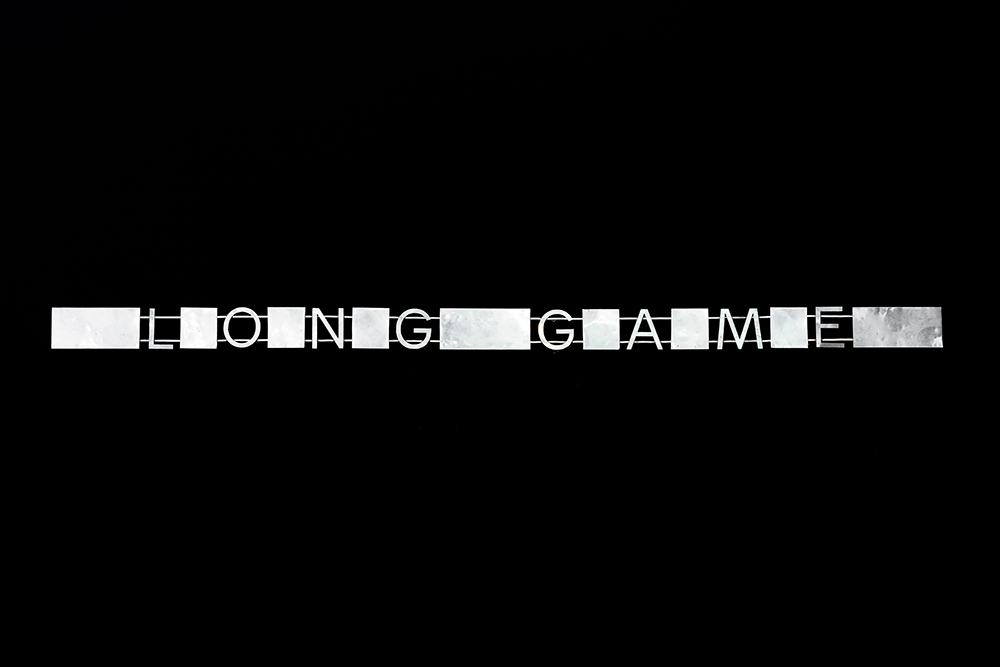
Jonathan Berger
LONG GAME
From Untitled (Emily Anderson and Mark Utter, with Erica Heilman), 2021
Tin, nickel
1.25h x 27.38w in
3.18h x 69.53w cm
Bj-2021-002

Jonathan Berger
WE DESERVE ROYAL TREATMENT FOR OUR LOST SOULS
From Untitled (Emily Anderson and Mark Utter, with Erica Heilman), 2019
Tin, nickel silver
4.38h x 48w in
11.11h x 121.92w cm
Bj-2019-001

Jonathan Berger
WE DECIDED TO GO INSIDE THE WALLS. THIS WAS A SECRET THING WE HAD GOING ON. WE'D COME DOWN HERE. WE'D COME HOME. NOBODY KNEW NOTHING.
From Untitled (Maria A. Prado and Margaret Morton, with Esther Kaplan), 2021
Tin, nickel
11h x 46.50w in
27.94h x 118.11w cm
Bj-2021-016

Jonathan Berger
THERE IS NOTHING LIKE LIVING LIFE ON THE LAM, LIKE BEING FREE.
From Untitled (Maria A. Prado and Margaret Morton, with Esther Kaplan), 2021
Tin, nickel
4.50h x 47.50w in
11.43h x 120.65w cm
Bj-2021-015

Jonathan Berger
THE TUNNEL
From Untitled (Maria A. Prado and Margaret Morton, with Esther Kaplan), 2021
Tin, nickel
1.25h x 11.50w in
3.18h x 29.21w cm
Bj-2021-013
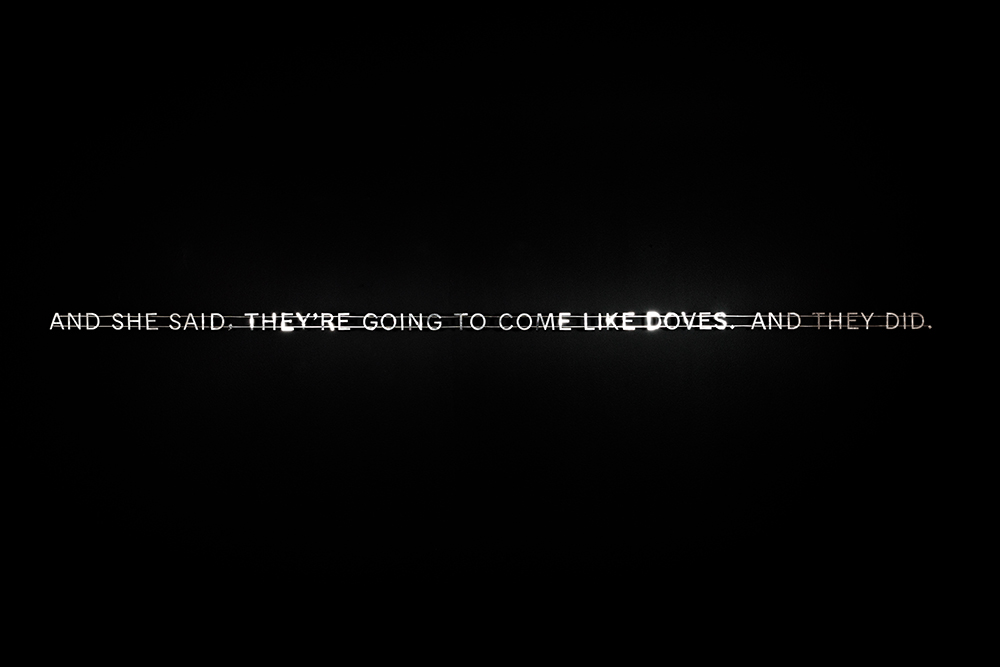
Jonathan Berger
AND SHE SAID, THEY'RE GOING TO COME LIKE DOVES. AND THEY DID
From Untitled (Brother Arnold Hadd, with Sarah Workneh), 2021
Tin, nickel
1.25h x 67w in
3.18h x 170.18w cm
Bj-2021-007

Jonathan Berger
AND NOW FOR THE MIRACLE OF MIRACLES
From Untitled (Emily Anderson and Mark Utter, with Erica Heilman), 2021
Tin, nickel
1.25h x 91.50w in
3.18h x 232.41w cm
Bj-2021-006


Jonathan Berger
EVERYTHING'S GOING TO BE BETTER. I'M TELLING YOU EVERYTHING'S GOING TO BE FINE.
From Untitled (Emily Anderson and Mark Utter, with Erica Heilman), 2021
Tin, nickel
7.75h x 81.50w in
19.69h x 207.01w cm
Bj-2021-005

Jonathan Berger
I AM IN HERE
From Untitled (Emily Anderson and Mark Utter, with Erica Heilman), 2021
Tin, nickel
1.25h x 31.75w in
3.18h x 80.65w cm
Bj-2021-003


Jonathan Berger
THE LITTLE GREEN BIRD SAYS: I AM TIRED OF SO MANY FRIENDLESS DAYS IN MY
LIFE. I WANT TO KNOW HOW IT FEELS TO HAVE OLD COLD LONESOME LONGING FOR LOVE
GONE.
From Untitled (Emily Anderson and Mark Utter, with Erica Heilman), 2021
Tin, nickel
17.50h x 92.25w in
44.45h x 234.32w cm
Bj-2021-001

Jonathan Berger
INTO HER NATIVE HABITAT ALONG THE ATLANTIC COAST AFTER A LONG QUARANTINE
From Untitled (Richard Ogust), 2021
Tin, nickel
7.75h x 30.50w in
19.69h x 77.47w cm
Bj-2021-024

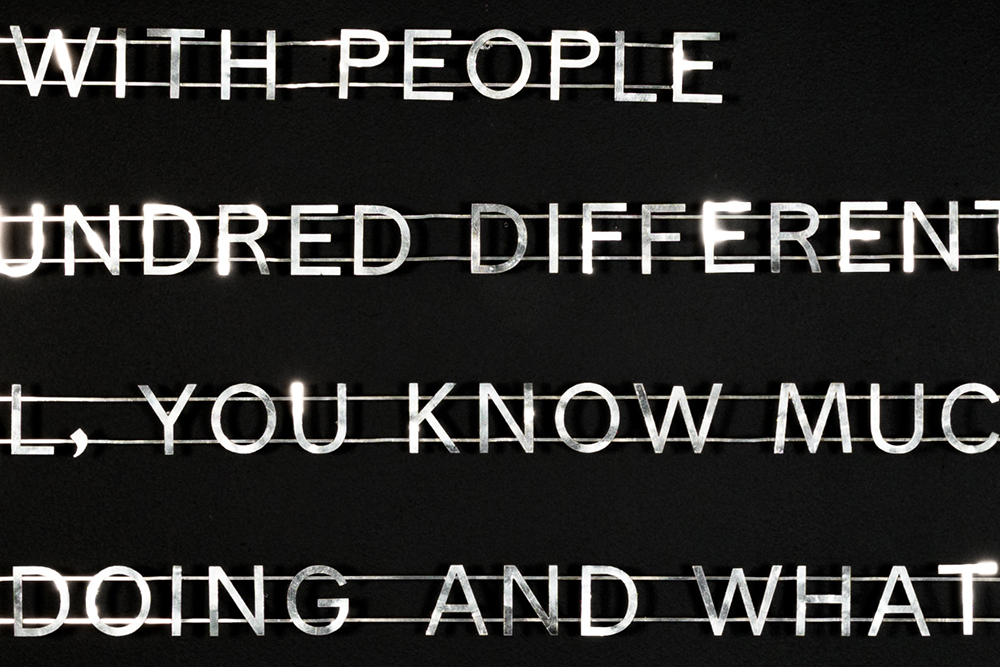
Jonathan Berger
RELATIONSHIPS WITH PEOPLE ARE ABOUT A HUNDRED DIFFERENT THINGS AT ONCE.
WITH AN ANIMAL, YOU KNOW MUCH BETTER WHAT IS GOING ON, WHAT YOU ARE DOING AND WHAT YOU ARE FEELING
From Untitled (Richard Ogust), 2021
Tin, nickel
11h x 62.50w in
27.94h x 158.75w cm
Bj-2021-025
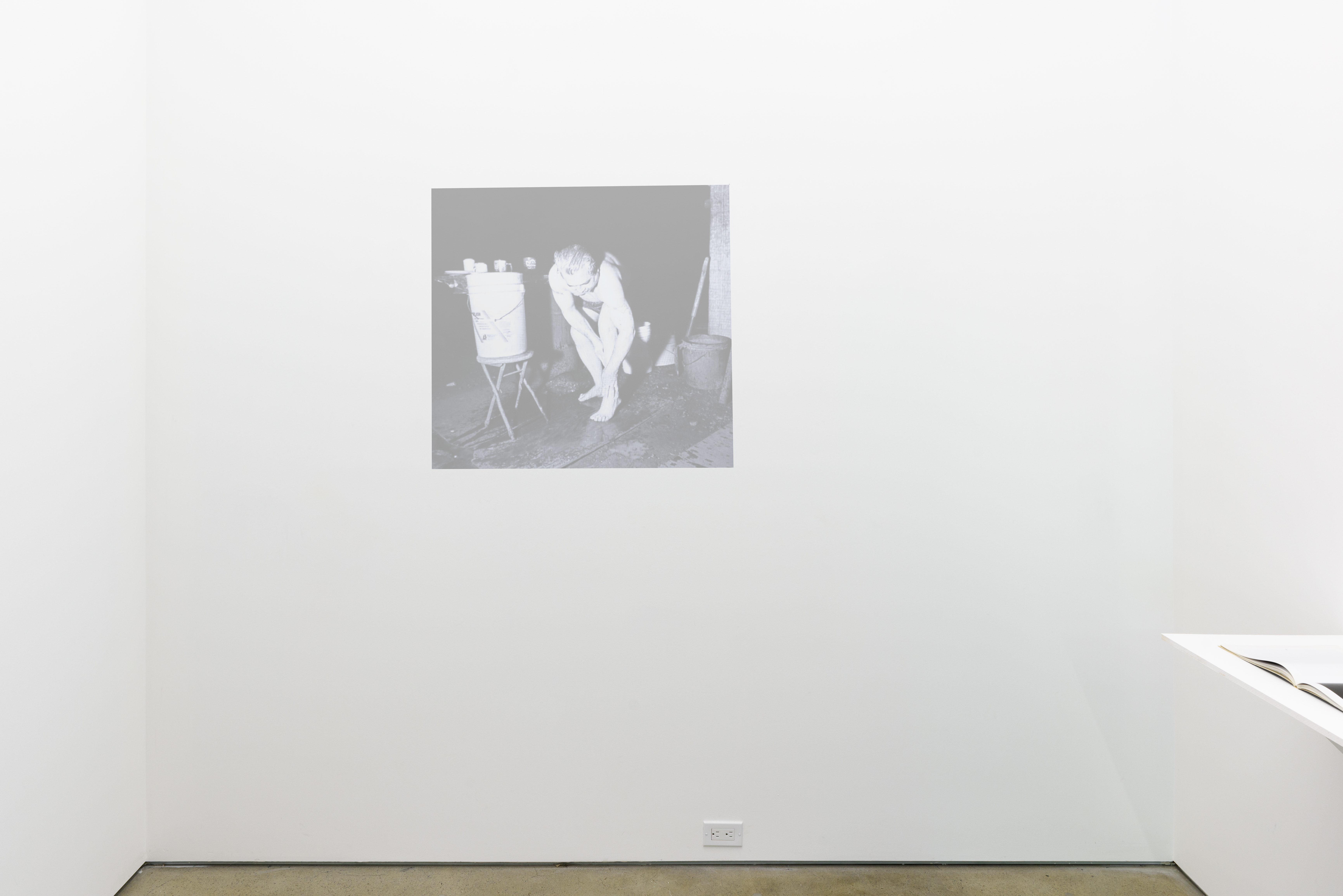
Margaret Morton
Fragile Dwelling, 2017
video
28 min
© OmbraLuce 2017
MM_001

Margaret Morton
The Tunnel: The Underground Homeless of New York City
Yale University Press; First Edition, November 29, 1995
160 pages
MM_002

Maria A. Prado
Findin’ Ma, 2021-ongoing
Edited by Stephanie E. Goodalle
MP001
Installation Images

